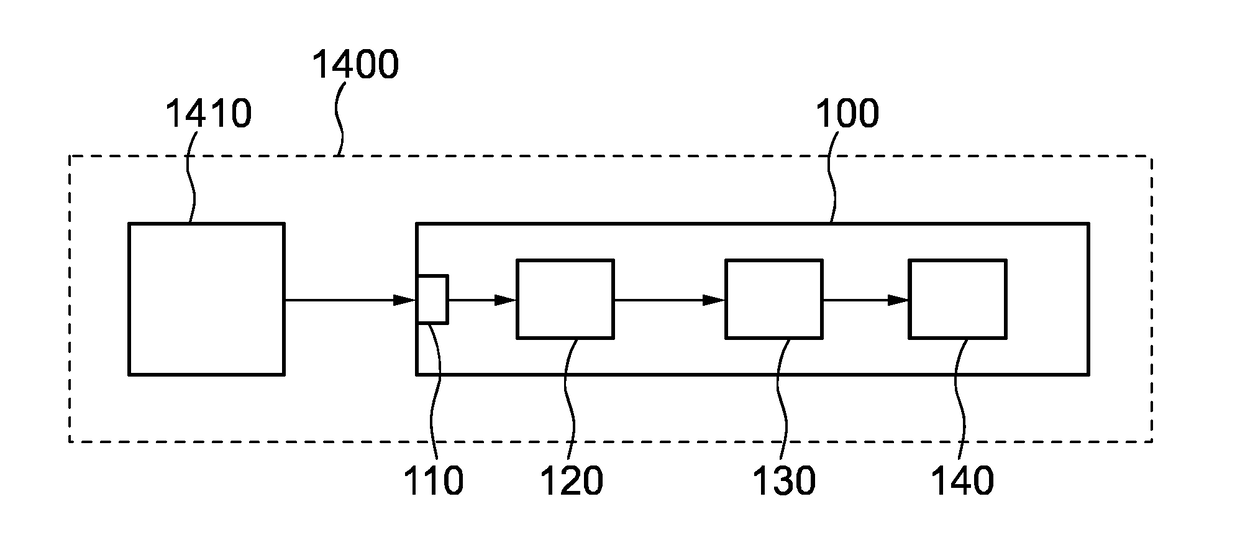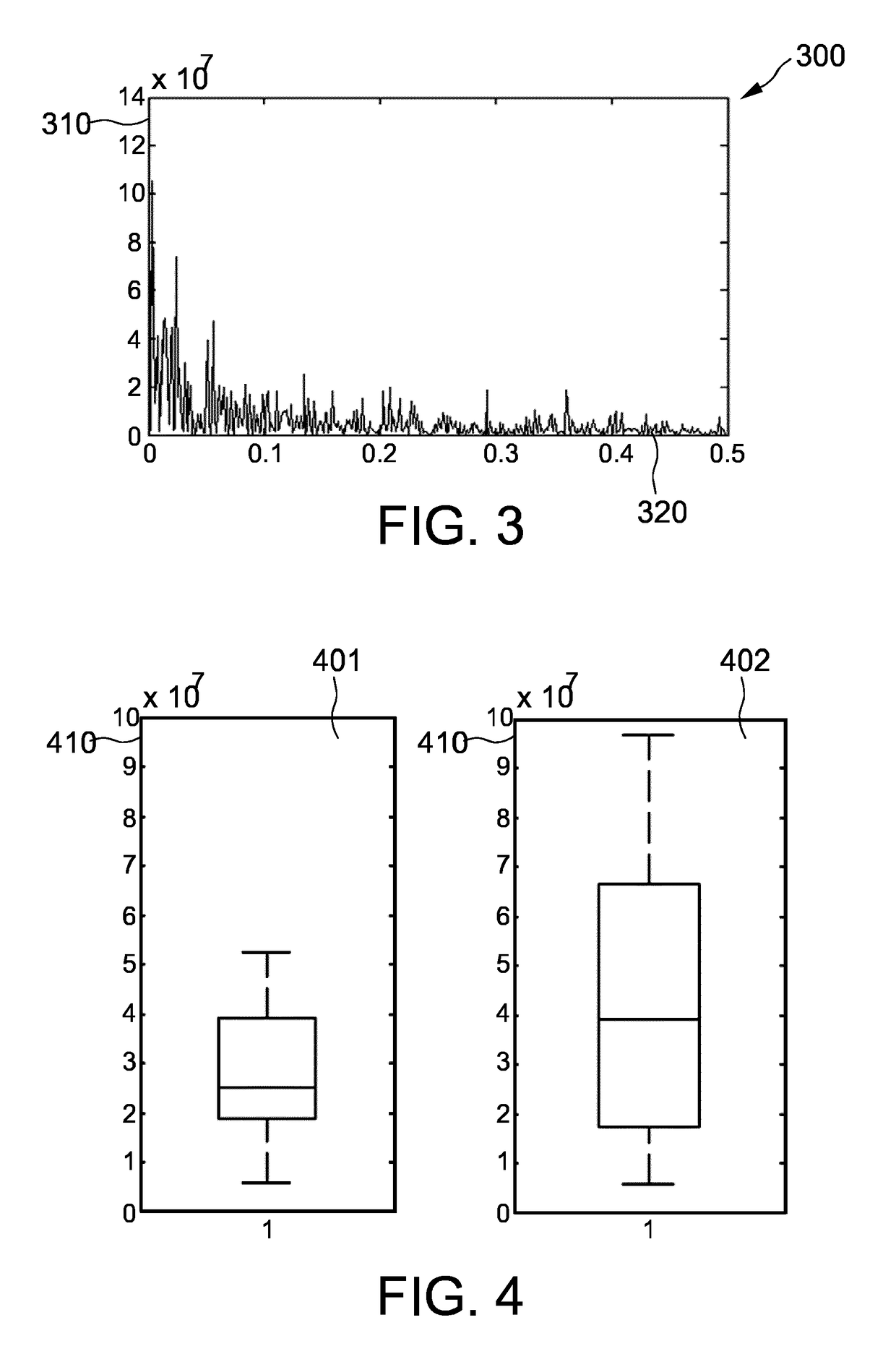Apparatus, system, method and computer program for assessing the risk of an exacerbation and/or hospitalization
a technology of exacerbation and risk, applied in the field of apparatus, system, method and computer program for assessing the risk of exacerbation and/or hospitalization, can solve the problems of life-threatening, chronic obstructive disease, progressive and irreversible disease, etc., and achieve the effect of low activity data during a rest period and increased readmission risk
- Summary
- Abstract
- Description
- Claims
- Application Information
AI Technical Summary
Benefits of technology
Problems solved by technology
Method used
Image
Examples
Embodiment Construction
[0093]FIG. 1 shows schematically and exemplarily an embodiment of a system 1400 for assessing a risk of an exacerbation and / or hospitalization of a subject. System 1400 comprises a physical activity measurement unit 1410 that is configured to gather time-dependent activity data for said subject. System 1400 further comprises an apparatus 100 for assessing a risk of an exacerbation and / or hospitalization of a subject, the apparatus 100 comprising: an input unit 110 for receiving time-dependent activity data for said subject; an activity data transform unit 120 configured to transform said time-dependent activity data to obtain frequency-dependent activity data, a moment determination unit 130 that is configured to compute a moment of said frequency-dependent activity data; and a risk assessment unit 140 that is configured to assess said risk of said exacerbation and / or hospitalization of said subject based at least on said moment. Risk assessment unit 140 may however also be configur...
PUM
 Login to View More
Login to View More Abstract
Description
Claims
Application Information
 Login to View More
Login to View More - R&D
- Intellectual Property
- Life Sciences
- Materials
- Tech Scout
- Unparalleled Data Quality
- Higher Quality Content
- 60% Fewer Hallucinations
Browse by: Latest US Patents, China's latest patents, Technical Efficacy Thesaurus, Application Domain, Technology Topic, Popular Technical Reports.
© 2025 PatSnap. All rights reserved.Legal|Privacy policy|Modern Slavery Act Transparency Statement|Sitemap|About US| Contact US: help@patsnap.com



